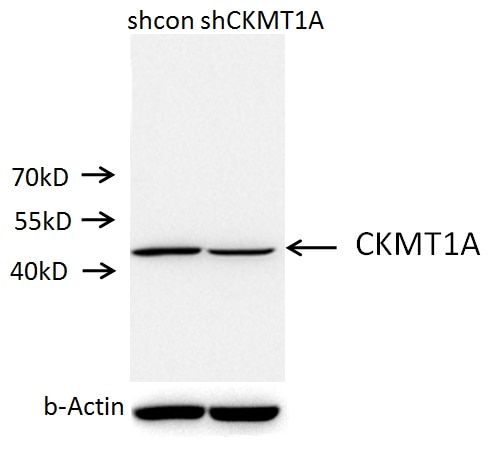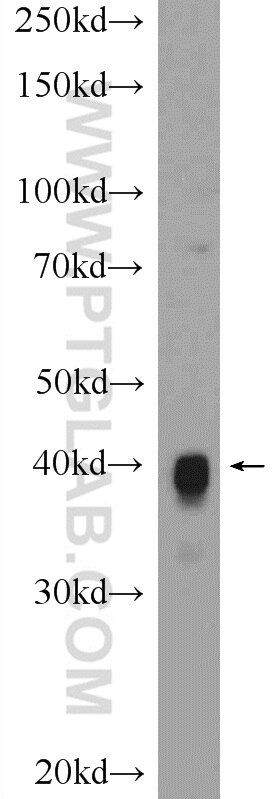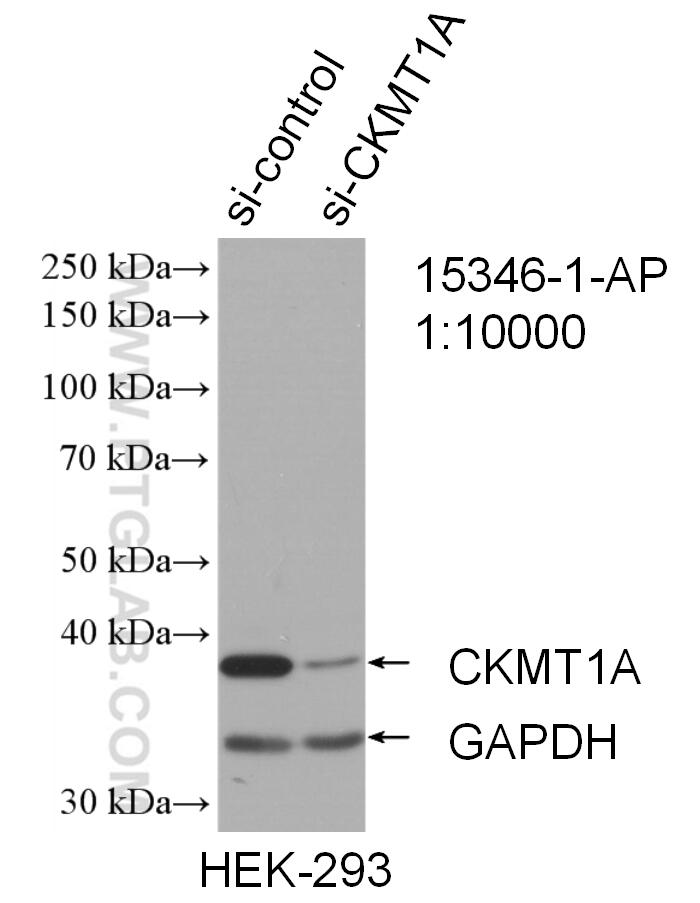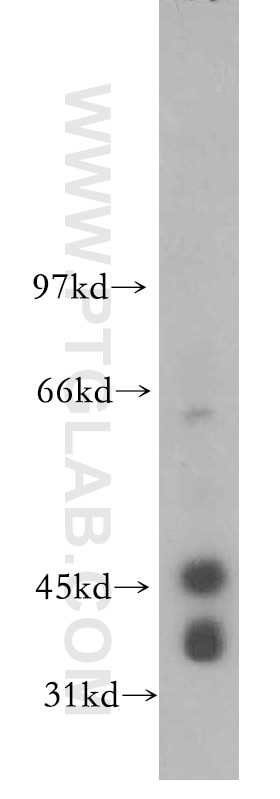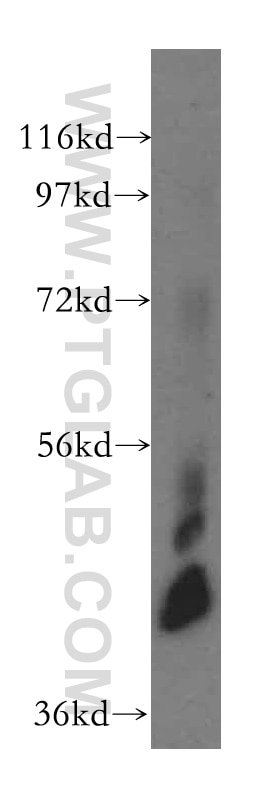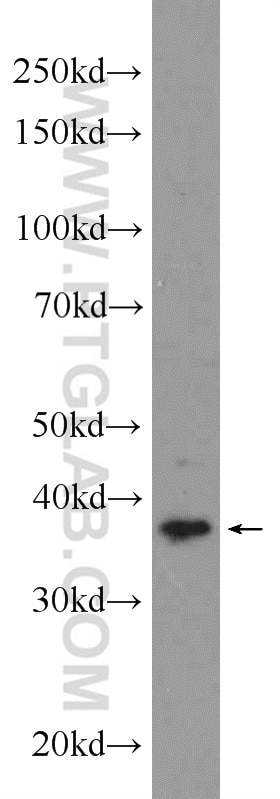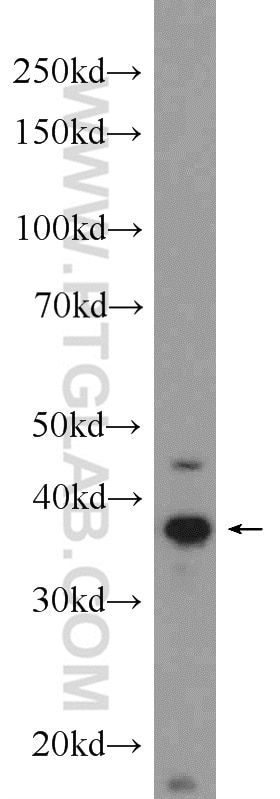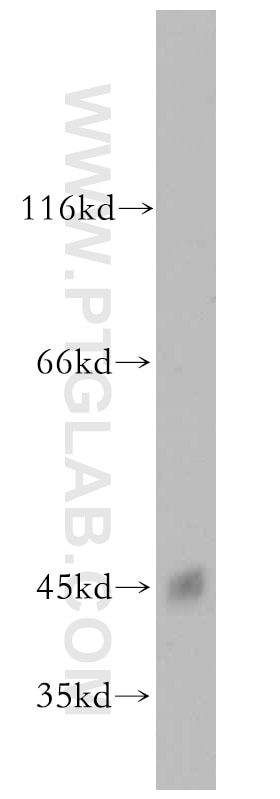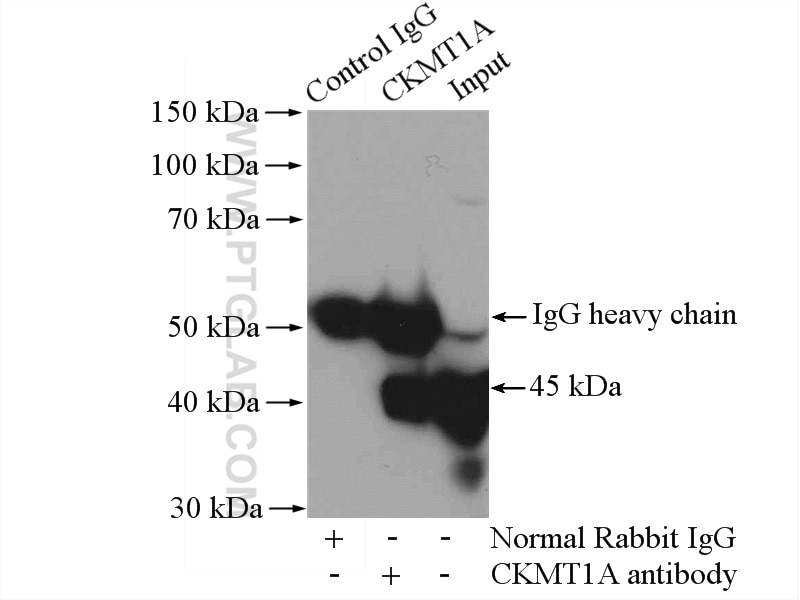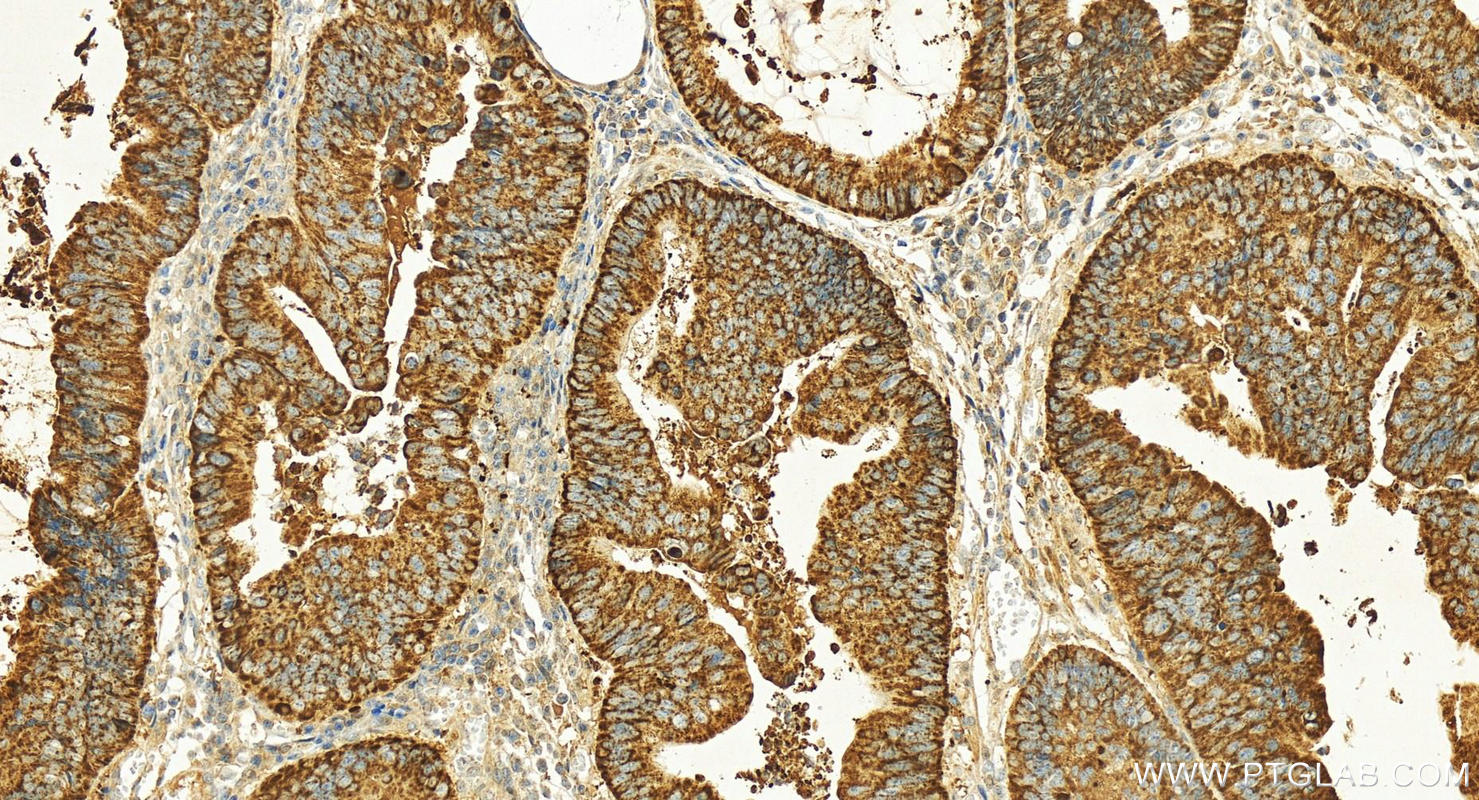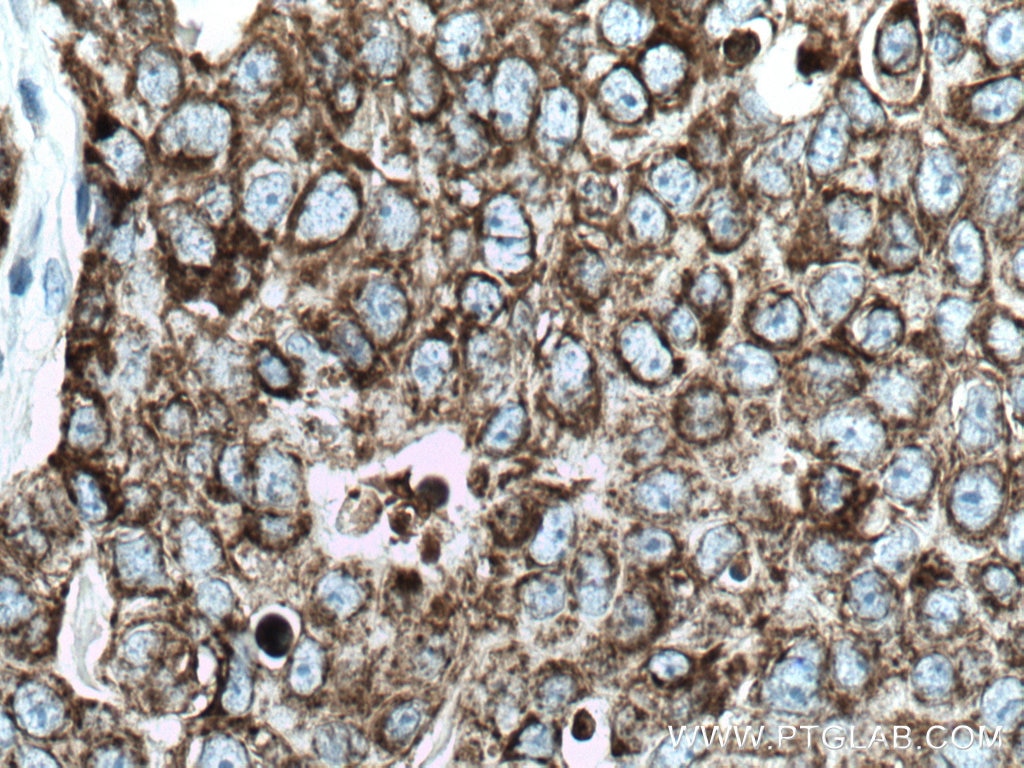Validation Data Gallery
Tested Applications
| Positive WB detected in | rat heart tissue, human colon tissue, human testis tissue, mouse heart tissue, mouse testis tissue, HEK-293 cells, A549 cells |
| Positive IP detected in | mouse heart tissue |
| Positive IHC detected in | human colon cancer tissue, human breast cancer tissue Note: suggested antigen retrieval with TE buffer pH 9.0; (*) Alternatively, antigen retrieval may be performed with citrate buffer pH 6.0 |
Recommended dilution
| Application | Dilution |
|---|---|
| Western Blot (WB) | WB : 1:500-1:3000 |
| Immunoprecipitation (IP) | IP : 0.5-4.0 ug for 1.0-3.0 mg of total protein lysate |
| Immunohistochemistry (IHC) | IHC : 1:400-1:1600 |
| It is recommended that this reagent should be titrated in each testing system to obtain optimal results. | |
| Sample-dependent, Check data in validation data gallery. | |
Published Applications
| KD/KO | See 3 publications below |
| WB | See 14 publications below |
| IHC | See 8 publications below |
| IF | See 6 publications below |
| FC | See 1 publications below |
Product Information
15346-1-AP targets CKMT1A in WB, IHC, IF, IP, ELISA applications and shows reactivity with human, mouse, rat samples.
| Tested Reactivity | human, mouse, rat |
| Cited Reactivity | human, mouse, rat, pig, sus scrofa domesticus (domestic pig) |
| Host / Isotype | Rabbit / IgG |
| Class | Polyclonal |
| Type | Antibody |
| Immunogen |
CatNo: Ag7583 Product name: Recombinant human CKMT1A protein Source: e coli.-derived, PGEX-4T Tag: GST Domain: 41-417 aa of BC001926 Sequence: SERRRLYPPSAEYPDLRKHNNCMASHLTPAVYARLCDKTTPTGWTLDQCIQTGVDNPGHPFIKTVGMVAGDEETYEVFADLFDPVIQERHNGYDPRTMKHTTDLDASKIRSGYFDERYVLSSRVRTGRSIRGLSLPPACTRAERREVERVVVDALSGLKGDLAGRYYRLSEMTEAEQQQLIDDHFLFDKPVSPLLTAAGMARDWPDARGIWHNNEKSFLIWVNEEDHTRVISMEKGGNMKRVFERFCRGLKEVERLIQERGWEFMWNERLGYILTCPSNLGTGLRAGVHIKLPLLSKDSRFPKILENLRLQKRGTGGVDTAATGGVFDISNLDRLGKSEVELVQLVIDGVNYLIDCERRLERGQDIRIPTPVIHTKH 相同性解析による交差性が予測される生物種 |
| Full Name | creatine kinase, mitochondrial 1A |
| Calculated molecular weight | 47 kDa |
| Observed molecular weight | 40-50 kDa |
| GenBank accession number | BC001926 |
| Gene Symbol | CKMT1A |
| Gene ID (NCBI) | 548596 |
| RRID | AB_2081073 |
| Conjugate | Unconjugated |
| Form | |
| Form | Liquid |
| Purification Method | Antigen affinity purification |
| UNIPROT ID | P12532 |
| Storage Buffer | PBS with 0.02% sodium azide and 50% glycerol{{ptg:BufferTemp}}7.3 |
| Storage Conditions | Store at -20°C. Stable for one year after shipment. Aliquoting is unnecessary for -20oC storage. |
Background Information
CKMT1A(Creatine kinase U-type, mitochondrial) is also named CKMT and belongs to the ATP:guanido phosphotransferase family. CKMT1A is a nearly identical copy of the CKMT1B gene. Both genes encode an identical CKMT1 protein(PMID:17098888). It reversibly catalyzes the transfer of phosphate between ATP and various phosphates. It has 2 isoforms produced by alternative splicing with the molecular weight of 47 kDa and 50 kDa.
Protocols
| Product Specific Protocols | |
|---|---|
| IHC protocol for CKMT1A antibody 15346-1-AP | Download protocol |
| IP protocol for CKMT1A antibody 15346-1-AP | Download protocol |
| WB protocol for CKMT1A antibody 15346-1-AP | Download protocol |
| Standard Protocols | |
|---|---|
| Click here to view our Standard Protocols |
Publications
| Species | Application | Title |
|---|---|---|
Cell Metab Tyrosine Phosphorylation of Mitochondrial Creatine Kinase 1 Enhances a Druggable Tumor Energy Shuttle Pathway.
| ||
Nat Commun Functional antagonism between ΔNp63α and GCM1 regulates human trophoblast stemness and differentiation.
| ||
Respir Res Mitochondrial creatine kinase 1 in non-small cell lung cancer progression and hypoxia adaptation. | ||
Mol Oncol Ryanodine receptor 2 promotes colorectal cancer metastasis by the ROS/BACH1 axis | ||
Int J Cancer Increased serum mitochondrial creatine kinase activity as a risk for hepatocarcinogenesis in chronic hepatitis C patients. | ||
Front Cell Neurosci Investigations into photoreceptor energy metabolism during experimental retinal detachment |

